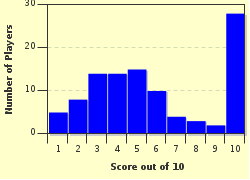Quiz Answer Key and Fun Facts
1. Who was the first U.S. President to visit Japan?
2. Which bilateral telecommunications trade issue between the U.S. and Japan was the most intractable in the late 1980s but was finally resolved in 1994?
3. In the mid 1990s what incident in Okinawa really tested the integrity of the U.S.-Japan Security relationship?
4. Who was the Japanese Ambassador to the United States at the time of the attack on Pearl Harbor?
5. Who was the longest serving U.S. Ambassador to Japan?
6. What was the name of the American financier who played a critical role in supporting Japan's effort during the Russo-Japanese War?
7. Which Japanese Prime Minister was brought down by a crisis in U.S.-Japan relations?
8. Who was the first U.S. Envoy to Japan?
9. What bilateral trade issue jeopardized negotiations over returning Okinawa to Japanese sovereignty in the late 1960s?
10. Which was the intended city of the second atomic bomb attack on Japan by the United States at the close of World War 2?
Source: Author
skipp1
This quiz was reviewed by FunTrivia editor
Bruyere before going online.
Any errors found in FunTrivia content are routinely corrected through our feedback system.

